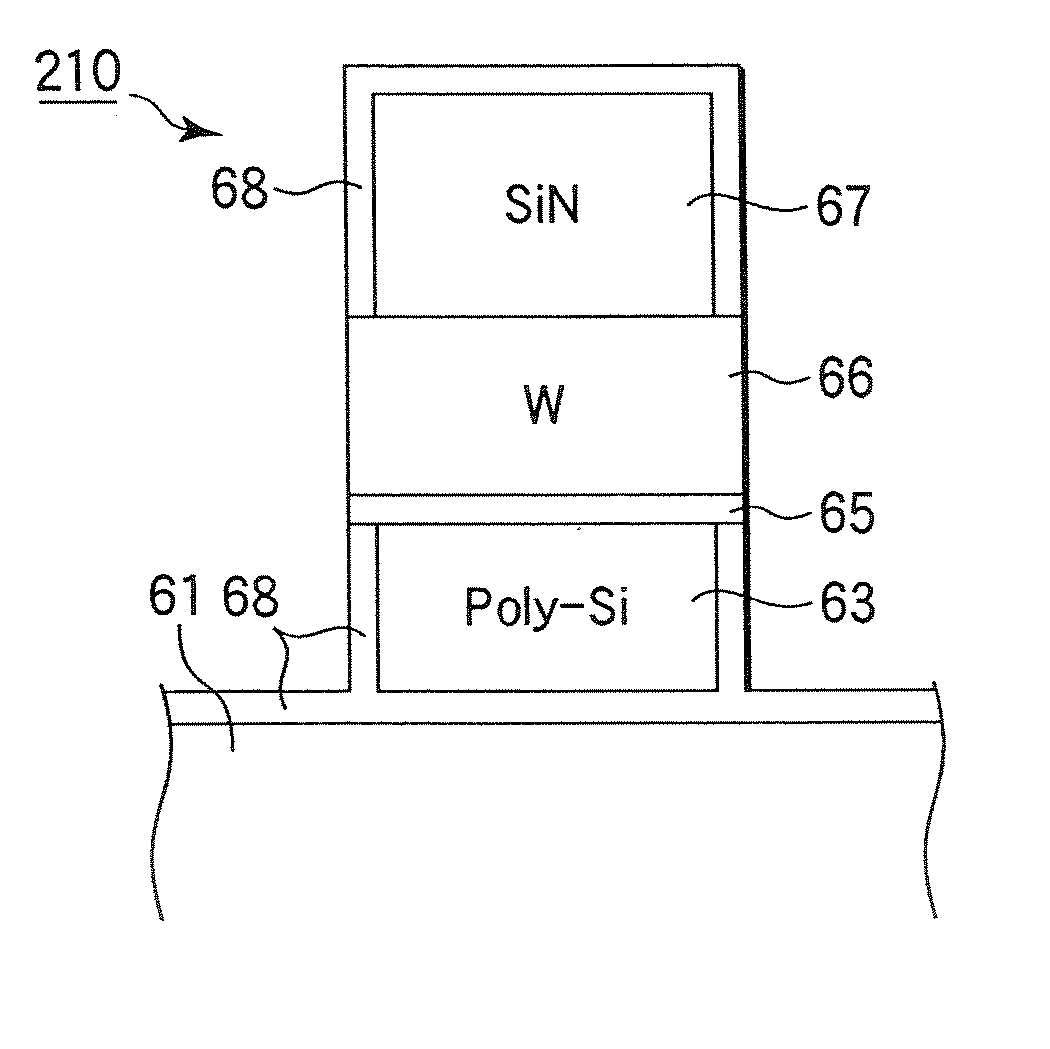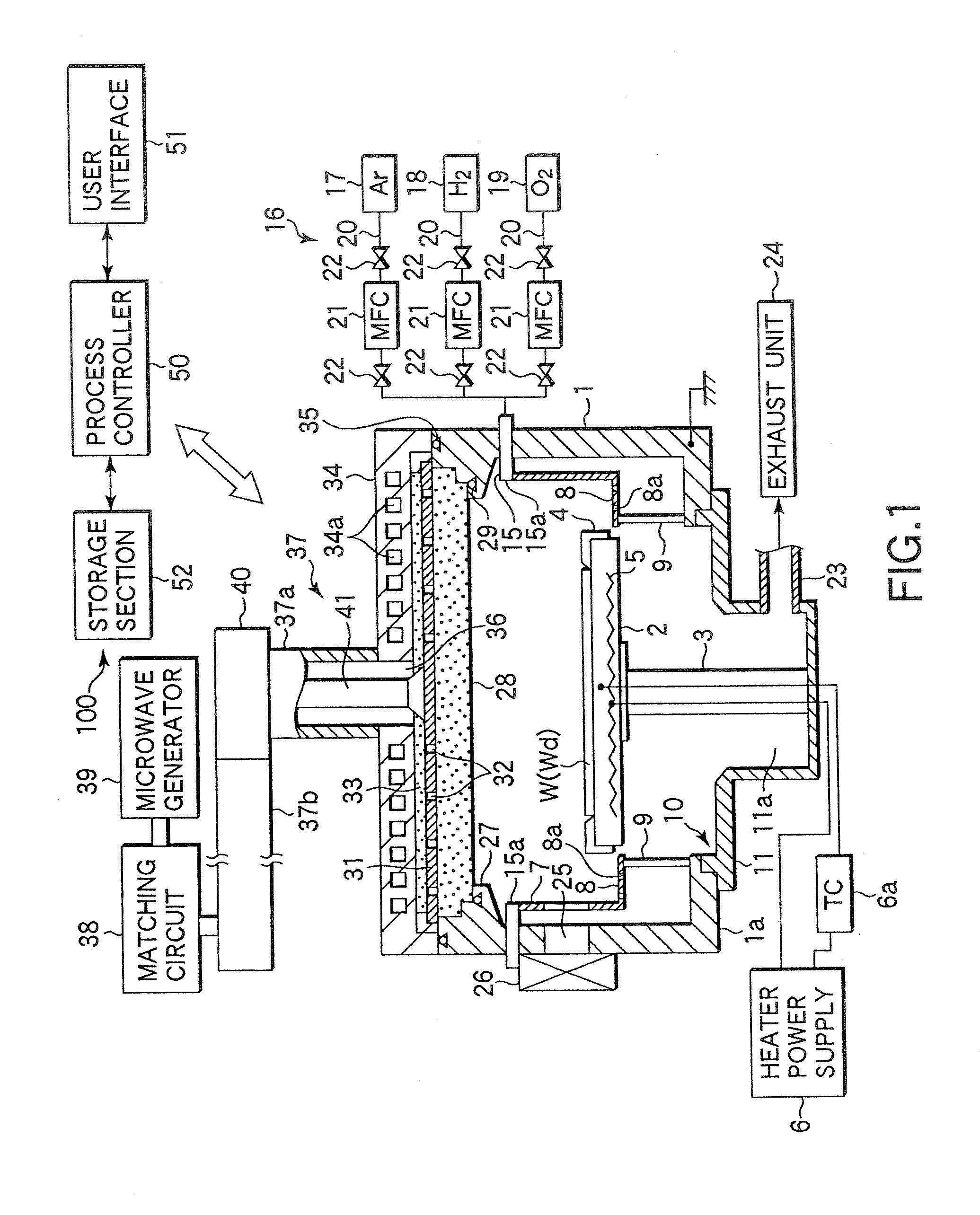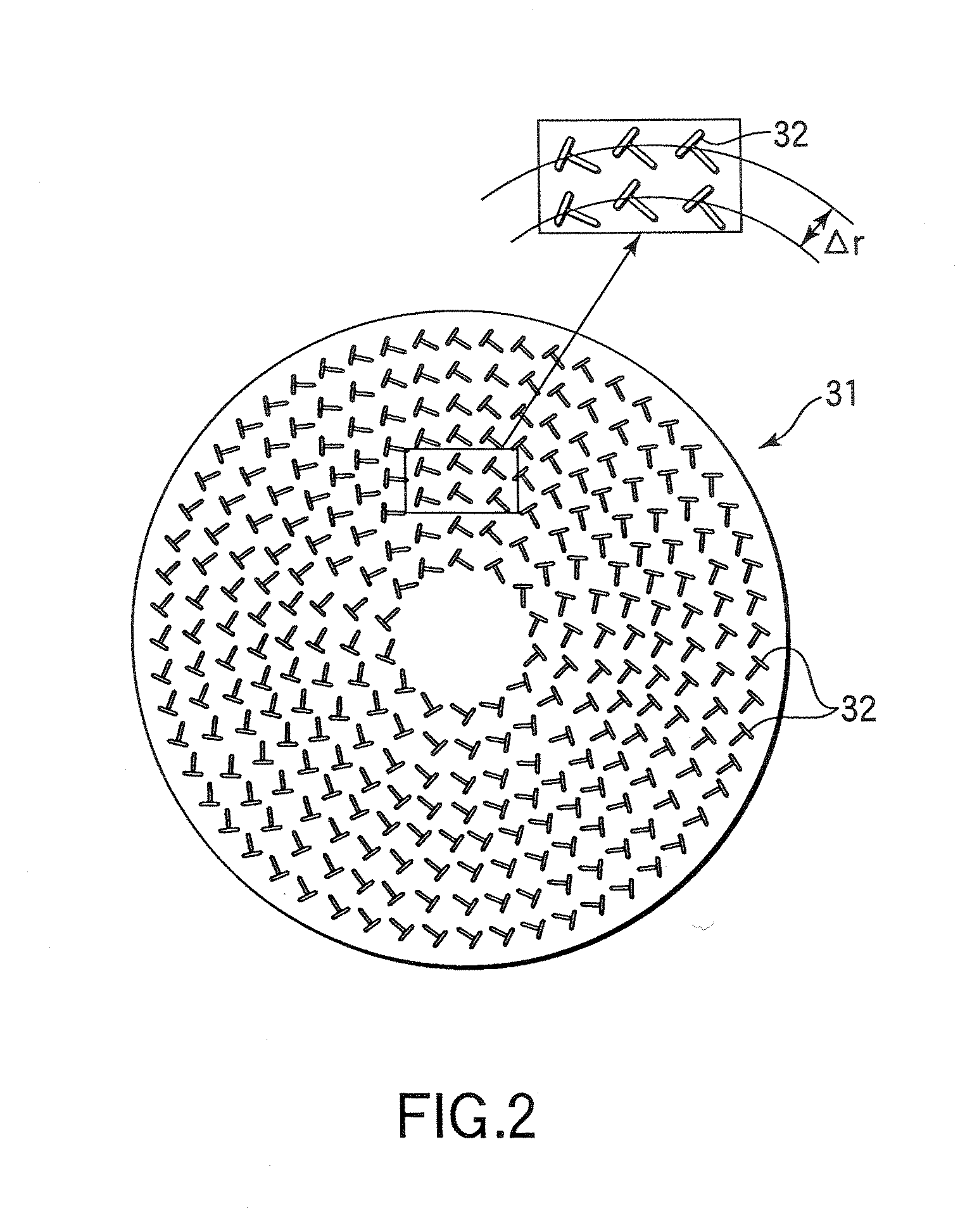Semiconductor Device Manufacturing Method and Plasma Oxidation Method
a technology of plasma oxidation and semiconductor devices, applied in the direction of coatings, chemical vapor deposition coatings, electric discharge tubes, etc., to achieve the effects of improving the uniformity of oxide film thickness, reducing the variation of film thickness, and improving electrical characteristics
- Summary
- Abstract
- Description
- Claims
- Application Information
AI Technical Summary
Benefits of technology
Problems solved by technology
Method used
Image
Examples
Embodiment Construction
[0092]A preferred embodiment of the present invention will be explained below with reference to the accompanying drawings.
[0093]FIG. 1 is a sectional view schematically showing an example of a plasma processing apparatus suited to practice a plasma oxidation method of the present invention. This plasma processing apparatus is constructed as an RLSA (Radial Line Slot Antenna) microwave plasma processing apparatus capable of generating a high density, low electron temperature microwave plasma by supplying microwaves into a process chamber by using a planar antenna having a plurality of slots, particularly an RLSA, and is suitably used to, e.g., selectively oxidize the sidewalls of polysilicon of a gate electrode.
[0094]A plasma processing apparatus 100 has an almost cylindrical chamber 1 that is airtightly constructed and grounded. A circular opening 10 is formed in an almost central portion of a bottom wall 1a of the chamber 1, and the bottom wall 1a has an exhaust chamber 11 that com...
PUM
| Property | Measurement | Unit |
|---|---|---|
| temperature | aaaaa | aaaaa |
| pressure | aaaaa | aaaaa |
| flow rates | aaaaa | aaaaa |
Abstract
Description
Claims
Application Information
 Login to View More
Login to View More - R&D
- Intellectual Property
- Life Sciences
- Materials
- Tech Scout
- Unparalleled Data Quality
- Higher Quality Content
- 60% Fewer Hallucinations
Browse by: Latest US Patents, China's latest patents, Technical Efficacy Thesaurus, Application Domain, Technology Topic, Popular Technical Reports.
© 2025 PatSnap. All rights reserved.Legal|Privacy policy|Modern Slavery Act Transparency Statement|Sitemap|About US| Contact US: help@patsnap.com



